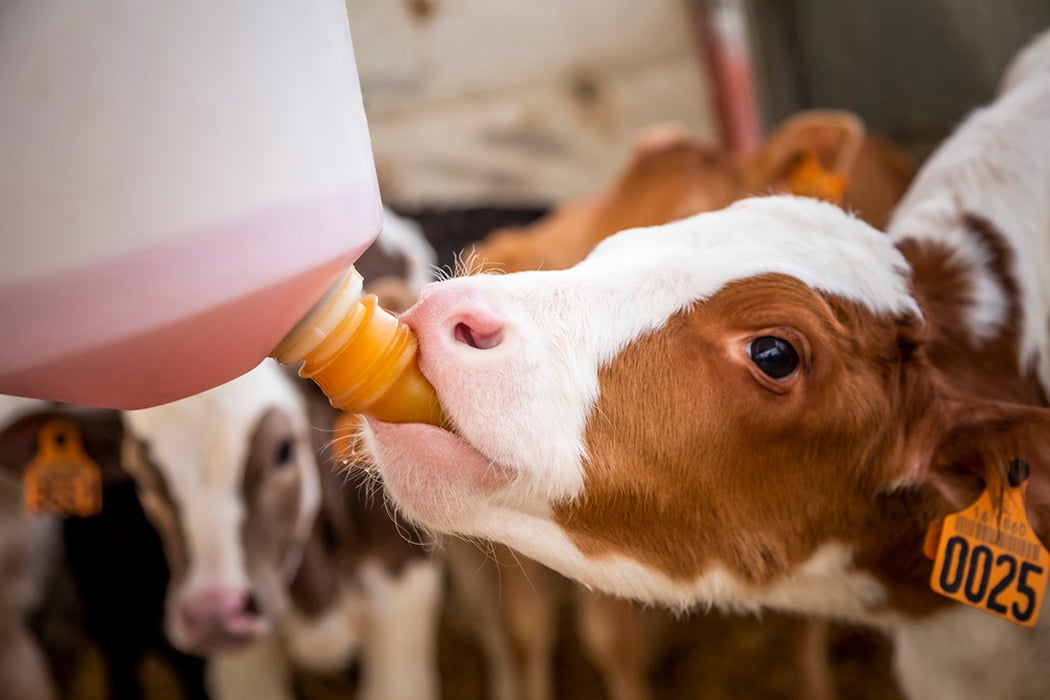Healthy and Happy Heifers
Healthy and Happy Heifers
Written by Unity Steinhobel
Unity is the ruminant formulator at Trouw Nutrition South Africa. She completed a master’s degree in animal nutrition at the University of Pretoria. She is a young and upcoming specialist in the field of nutrition and her main focus is formulating premixes and on-farm nutritional solutions for customers.
What is a happy heifer? One that is without disease and one that would perform optimally in the future. All cows are different; some produce more milk, others are more prone to disease. Variations in a cow’s metabolism play an important role in her phenotypic differences, but there is a common misconception that these differences are only determined by her genetic make-up. Calf weaning is a tricky business, but weaning later and smarter, along with a high plane of nutrition prior to weaning, provides benefits for healthy and happy heifers.

WEANING STRESS
No matter how you go about it, the weaning process creates stress in calves as one digestive system replaces another. Yet, several recently published studies show that the choice to wean later, rather than earlier, can have significant health and performance benefits. The key is gastrointestinal tract permeability. High gut permeability during the pre-weaning phase, can leave calves vulnerable to pathogens once the weaning process begins.
Studies have shown that as calves age, the permeability of the gut decreases, enabling calves to better fight off diseases, including diarrhoea, the leading cause of calf death. Their data suggest that by weaning later, calves benefit from a fortified (less permeable) gut, thereby reducing one important factor of vulnerability.
A study where Holstein heifers were either weaned at six or eight weeks, showed that weaning at a later age resulted in higher growth rates during and after weaning, rates that were maintained for months beyond. Additionally, they had greater solid feed intakes, which suggests they were better able to cope with the transition from milk to solid feed. These calves had better overall digestive tract development, indicated by higher starch digestion, and handled the increase in ruminal fermentation more efficiently.
Metabolic Programming
In terms of performance, higher calf growth rates prior to weaning can set the stage for continued growth post-weaning and a lifetime of enhanced productivity. The optimal window to initiate metabolic programming is within the first two months of life, therefore, nutritional interventions need to be made early in the heifer’s life.
Research shows that a high plane of nutrition improves calf growth rates and organ development. Calves like milk a lot. Milk is their food by nature and it is very nutritious. The nett energy level in milk solids is around two times higher than in calf starter feed. This means that for every litre of milk lowered (containing 130–150 g milk solids), a calf needs to consume 250 g of calf starter feed. Studies have demonstrated that calves fed higher levels of milk replacer had significantly different metabolic profiles one week before weaning compared to calves receiving lower levels of milk replacer. These heifers went on to conceive and calve at an earlier age, indicating that these early life, nutrition-induced metabolic changes were advantageous over time.
Furthermore, feeding increasing levels of calf starter feed as calves approach weaning, plays a critical role in stimulating rumen development and higher feed intakes. For every litre of milk lowered, a calf needs to consume 250 g of calf starter feed. This means that calves drinking eight litres of milk need to consume more than 2 kg of calf starter per day at weaning. Unfortunately, calf starter feed intake is not always monitored on-farm. As a result, many calves do not consume enough calf starter at weaning, which ultimately reduces their growth potential due to poor weaning transition.
RUMEN DEVELOPMENT
It is important to continue to support heifer rumen development post-weaning. Calf pellet intake needs to be accompanied by ad-lib straw or hay pre and post-weaning, as it’s essential for developing rumen motility, capacity, and health. At the age of six months, the rumen should have increased in size by fivefold.
Even though rumen development is crucial, it is also important that calves should maintain a constant growth rate. This can be achieved by supplying energy in the form of a total mixed ratio (TMR) in combination with roughage. Giving too wet silage-based TMR should be avoided, as rumen capacity is still a limiting factor in young calves, resulting in reduced feed intake and growth rate.
IMMUNITY
It seems logical that if you feed calves more, they are likely to grow more. However, what about the correlation between a higher plane of early nutrition and health? Nutrition can influence the development of the gastrointestinal tract and its immunity, which are both vital for short-term health and long-term resilience to disease.
Restricting feeding delays the development of gastrointestinal immunity and may also increase the likelihood of non-nutritive oral behaviours, such as licking the environment, potentially contributing to an increased risk of disease. Studies showed that heifers fed a higher plane of nutrition had better hydration and faecal score improvement following Cryptosporidium parvum challenge at three days of life. Similarly, another study showed that calves with a higher plane of nutrition before weaning had improved resistance when challenged with Salmonella one month after weaning.
While there are many important variables involved in raising heifers, research suggests that an elevated plane of nutrition pre-weaning, combined with a step-down process at weaning and a later age at weaning, is a prescription for future heifer health and performance. Therefore, it is time to shift our focus from short-term growth goals to long-term resilience.